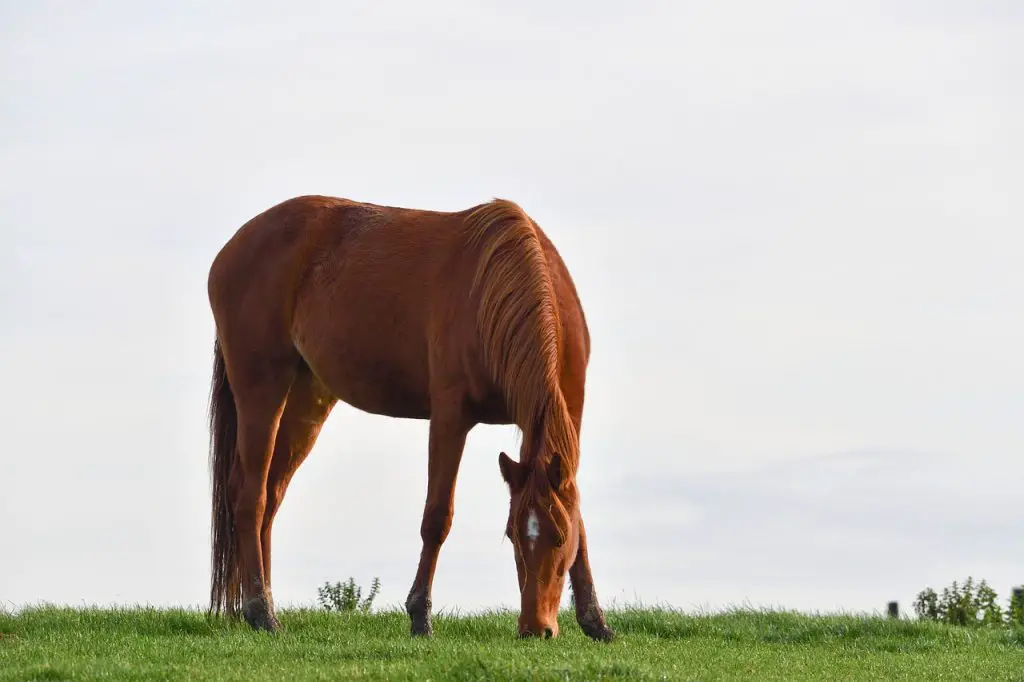Last Updated on February 21, 2022 by Allison Price
The horse’s topline refers to the muscle covering over the top of the horse’s neck, back and loins. Performance horses and show horses need well-developed toplines in order to be balanced and strong for jumping, racing and dressage. The horse’s topline can be affected by many factors, such as age, conformation, exercise, disease (gastric ulcers, Cushing’s disease), chronic back pain (kissing spine or poor saddle fit, vertebral Subluxation, arthritis, and so on). Because the horse’s topline will be deeper if there is more fat tissue, nutritional factors also include body condition. If the horse is regularly working and we don’t provide enough calories, it can lead to a poor body condition that may result in poor muscular performance.
Essential amino acids are critical for protein quality. Three of the most essential or limiting amino acid for horses are methionine, threonine and lysine. These amino acids are essential for muscle repair and growth in horses that are growing or working. These amino acids are known as limiting amino acid because they cannot be synthesized in sufficient quantities in the body. This can lead to muscle growth being limited.

Large amounts of hay is given to mature horses who are working. Sport horses can be kept in good condition by eating mainly forage. However, topline can often be improved by a simple feed change. Concentrates and conventional horse feeds can meet the nutrient needs of horses when they are fed at 0.5% of their body weight each day. Because of their faster metabolisms and high intake of forage, many sport horses and other easy-keeper breeds are fed less than this. This causes a lack of vitamins, minerals, and amino acids in horses’ diets. This makes it more difficult to provide essential amino acids to horses, as the horse’s ability to digest protein and absorb essential amino acids from forages is half that of concentrates.
A few pounds of regular horse feed per day won’t be enough to provide sufficient essential amino acids for active horses. It will also not give you a good topline. A balancer pellet can be added to your horse’s feed to ensure that they have adequate amounts of essential amino acids. When fed in small quantities, balancer pellets can meet your horse’s protein, mineral and vitamin needs. These pellets are suitable for horses with a low level of maintenance or those who need to reduce their weight. One pound per 1,000-lb bodyweight per day is the recommended feeding rate. You can see a significant improvement in your horse’s health by replacing 1 lb per day of regular horse feed with 1 Lb of a balanced pellet.
Legends(r), CarbCare Balancing Pellet can meet all nutritional requirements for your horse at a low feed rate of 1 lb for every 1,000 lb body weight. These products are high in guaranteed amino acids, vitamins, minerals, and vitamins. They also contain live yeast, probiotic bacteria and organic trace minerals. Flaxseed and biotin are some of the other ingredients.
You may be wondering which feeds or supplements are best for your horse. Use the Legends microsteer Ration Wizard to find out.



